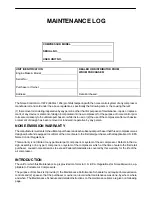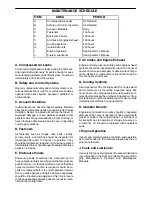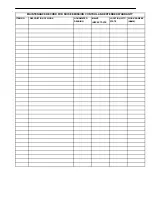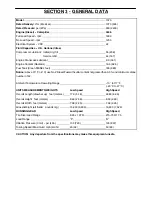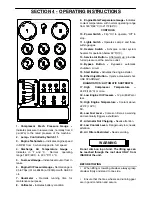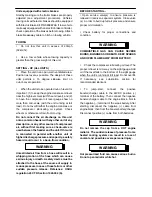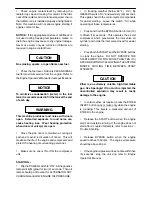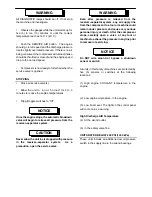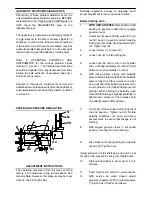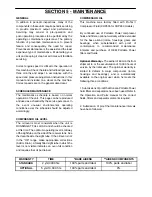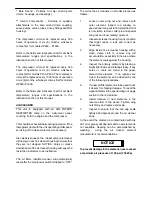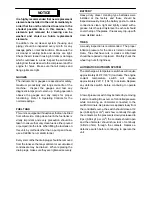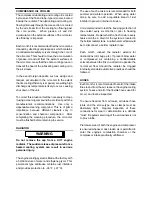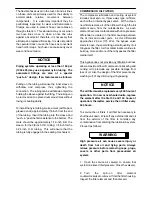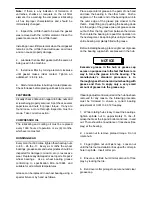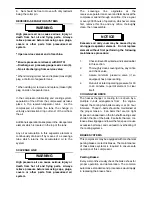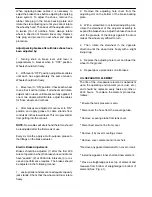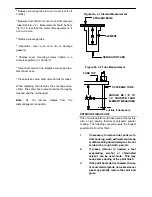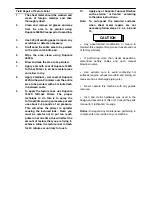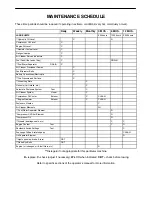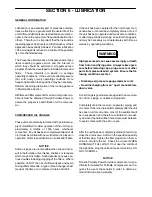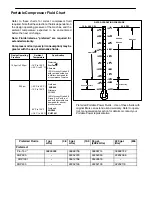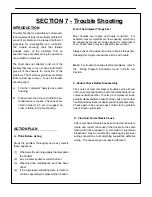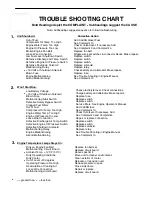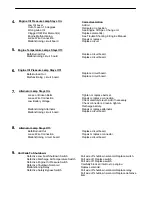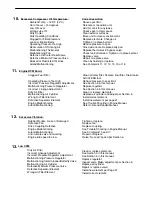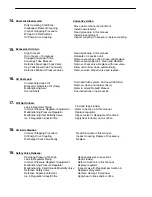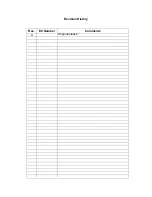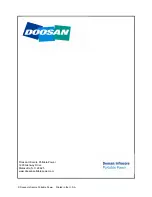
The flexible hoses used in the fuel, oil and air lines
on these units are primarily used for their ability to
accommodate
relative
movement
between
components. It is extremely important they be
periodically inspected for wear and deterioration.
Clamps are used to prevent hose cover abrasion
through vibration. This abrasion may occur when
two hose lines cross, or when a hose line rubs
against a fixed point; therefore, it is necessary that
all clamps be replaced if missing. It is also important
the operator does not use the hoses as convenient
hand hold or steps. Such use can cause early cover
wear and hose failure.
NOTICE
Piping systems operating at less than 150 psi
(1050 kPa) may use a special nylon tubing. The
associated fittings are also of a special
“push--in” design. If so, features are as follows:
Pulling on the tubing will cause the inner sleeve to
withdraw and compress, thus tightening the
connection. The tubing can be withdrawn only while
holding the sleeve against the fitting. The tubing can
be removed and replaced numerous times without
losing its sealing ability.
To install the nylon tubing, make a mark (with tape or
grease pencil) approximately 7/8 inch from the end
of the tubing. Insert the tubing into the sleeve and
“push--in” past the first resistance to the bottom. The
mark should be approximately 1/16 inch from the
sleeve, for the 3/8 inch O.D. tubing; 1/8 inch for the
0.25 inch O.D. tubing. This will ensure that the
tubing is fully engaged in the sealing mechanism.
COMPRESSOR OIL FILTERS
The compressor lubrication and cooling oil system
includes dual spin--on, throw away type oil filters,
each with an internal bypass valve. With a clean,
new filter element, all of the oil flows through the full
element area, from the outside/inside. As each
element becomes contaminated with dirt, a pressure
differential is created in the filter housing between
the oil inlet and outlet ports. As this differential
approaches 25 psi (175 kPa), the bypass valve
starts to open, thus permitting a small quantity of oil
to bypass the filter. As the contaminants continue to
build up, more and more of the oil bypasses the filter
media itself.
This bypass does not provide any filtration but does
allow a maximum flow of compressor lubricating and
cooling oil to preclude any possible damage from
loss of oil. Also the design of the filter prevents any
washing--off of any dirt during oil bypassing.
NOTICE
The oil filter must be replaced every 500 hours of
operation. On new or overhauled units, replace
the element after the first 50 and 150 hours of
operation; thereafter, service the oil filter every
500 hours.
To service the oil filters it will first be necessary to
shut the unit down. Wipe off any external dirt and oil
from the exterior of the filter to minimize any
contamination from entering the lubrication system.
Proceed as follows:
WARNING
High pressure air can cause severe injury or
death from hot oil and flying parts. Always
relieve pressure before removing caps, plugs,
covers or other parts from pressurized air
system.
1. Open the service air valve(s) to ensure that
system is relieved of all pressure. Close the valve(s).
2. Turn
the
spin--on
filter
element
counterclockwise to remove it from the filter housing.
Inspect the filter element and then discard.

